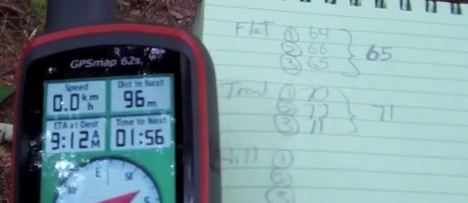In this video, I’ll show you how to estimate distance without a GPS when using map & compass while hiking. This was something I learned when volunteering at the halifax search & rescue as part of the woodslore training that volunteers had to do.
The Concept
The concept is rather easy; when you are navigating with a map & compass and a topo map, you will need to estimate your position or distance traveled on the map without the assistance of a GPS.
First you need to measure out a set distance, like 100 m on a flat surface. Like a certified running track. Then walk normal and count the number of strides you will need to cover 100m. After a few lap, average out that number.
Then measure out the same distance over different terrain, like a trail or even in the woods bushwacking. Do the same averaging. The goal here is to find out over different terrains, your average pace for 100m. So that when you are navigating you will have a better idea how far 300m just by counting your strides.
The Steps
- Measure out a known distance with tape or GPS (note that GPS are not 100% accurate) or at a certified track. Use 100 meters for the distance.
- With a pad of paper & pen, do three laps of 100m over flat terrain. Count the number of strides that you take.
- Average the results of the three laps so that you have an overall number for flat terrain.
Now Repeat this over different terrain like wooded area, lie the other side of the ditch of the road you did the flat terrain. And then do a final set of three lap over terrain with obstacles and/or elevation change.
What we want to do is get an average number for each of those situations. Once you get three overall numbers, simply average that out to get a single number.
So for example, if you end up with 66, 70, 72 then you can average that out to 69 paces. In other words 69 paces = 100m. This becomes useful when you are doing map & compass, you can easily estimate a distance by simply counting your pace. A pacing bead is a handy tool to help you count. It’s kinda like a rosary, but each bead represents 10 paces, so after 10 beads; 1km.

